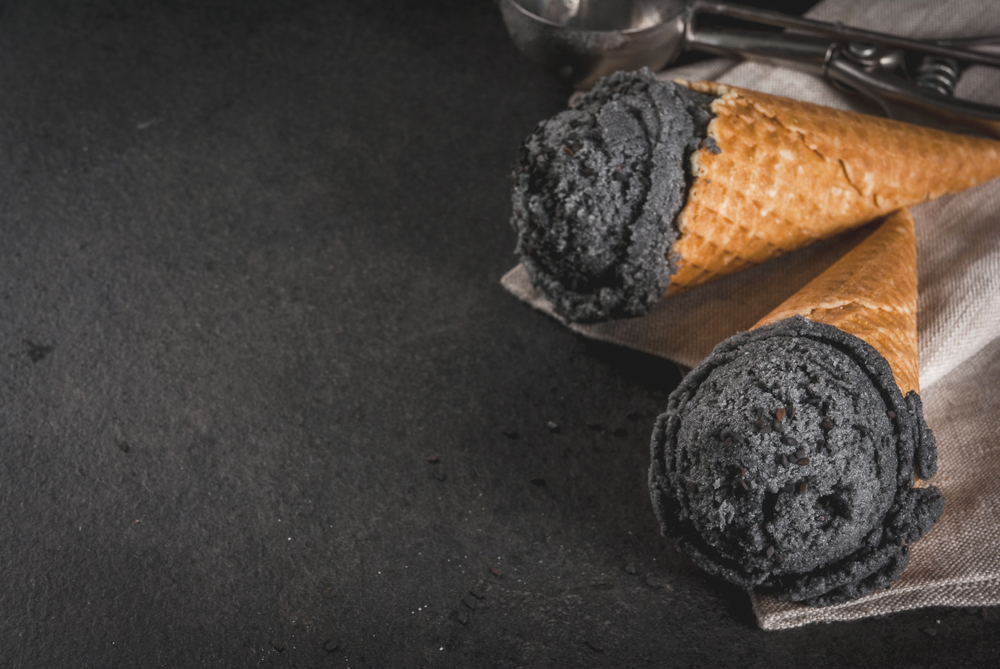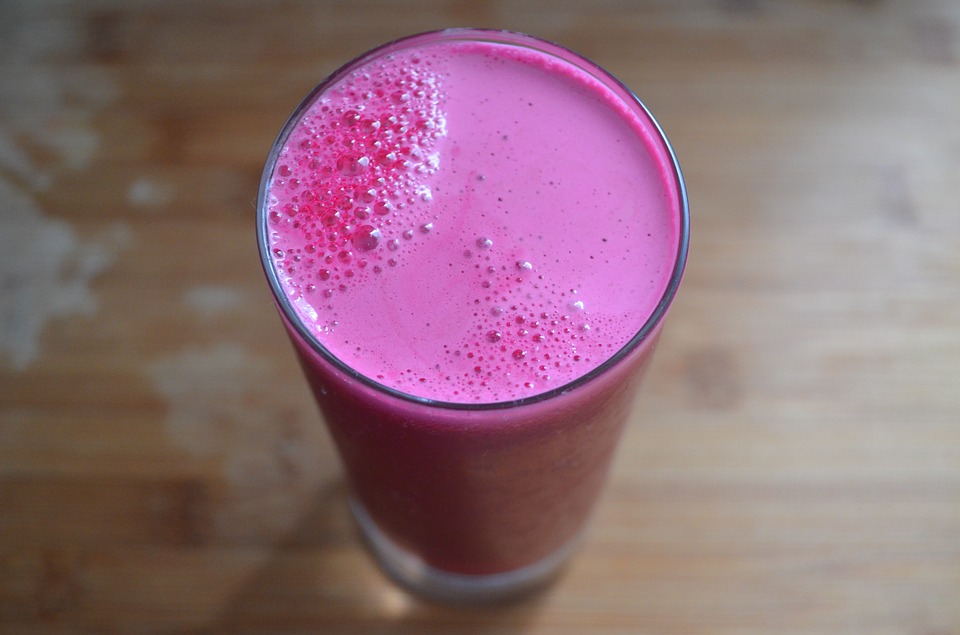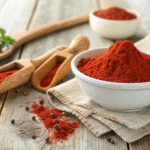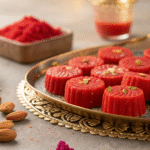
by admin | Aug 6, 2021 | Blog, Natural Color
There are various types of natural colors from different sources. But choosing the right color for your product seems to be difficult. For your ease, we have broken down the key factor which will help you to choose the right color for your product.
Ways to Choose Colour
Flavor:
Flavors play a vital role to guide you on what natural color you should choose. For Instance, if you are going with lemon flavor, turmeric curcumin , safflower yellow, Gardenia yellow are the best yellows for your product because they provide very bright yellow colors. But If you want to have pineapple or mango flavor, beta-carotene or annatto are the best options for you because they provide because they give more orange or more golden yellow colors which attract consumers even more.
Heat:
If your product goes through the heat procedure like HTST, pasteurization, baking, or maybe extrusion you should choose a heat-stable natural color in that case. Many natural colour have the ability where they can resist heat. Such natural colors are anthocyanins, carmine, beta-carotene, annatto, turmeric, copper chlorophyllin & carbon black & caramel colors as well, Natural brown & burnt sugars.
How to avoid colors being fade by heat
Colors that fade away with heat are mostly beet root red & Chlorophyll. For such cases, you can add more colors than you need upfront to avoid them being fade. But probably you want to avoid both of them.
Light :
Likewise, heat, some of the natural colors execute better with light exposure than others. You should avoid Paprika & beet red if your packaging is clear. You should also avoid Chlorophyll because it is not suitable for light. If you are trying to make a blue product you should use opaque packaging to protect the integrity of the color because the hue has limited options.
Interaction with other ingredients:
You should be very careful regarding ingredient interactions because if your product contains an emulsifier, you must check that whether the natural color formulation is even compatible with the other ingredients or not. Avoiding it may result in a broken emulsion. You should also be aware of vitamins & minerals because they can cause fading of the natural color in the final product.
pH-sensitive Colour :
You must also be
aware of ph-sensitive colors. Natural colors like red, purple carrot &
elderberry are those natural colors that are sensitive to pH. It means that the
shifting of the hue depends on the pH of the application they are in. If you
are working with a beverage or a confection at a low pH it will appear red, but
if you use a higher pH, it will turn purple-y blue.
Spirulina is also pH sensitive color. It works better between pH 4-7. Mostly other natural colors are stable with a wider pH range but hardly one or two will work in a pH under 2 like soda concentrates.
To know more about the natural pigments click this link now Santa color

by admin | Jul 29, 2021 | Blog, Natural Color
Various factors affect the natural colour stability. We test the natural colours because it ensures the processing formulation & packaging solutions are whether robust and validated or not
Today we are going to share how we can test stability for heat, light and acid.
Heat Stability
It’s essential to
know the heat stability of the natural colours before we use them in food like
bakeries, beverages, confections, extruded products where the colour will be
put through high temperature or periods of extended heat.
- There are various ways we can test the stability of heat for different applications. Usually, we can determine the stability of colours by incubating the colour at the same time and when temperature is close to the customer’s application.
- Colour is measure with a colourimeter before the test and after being put through the heat process.
- Colour must remain vibrant throughout the manufacturing process as well as the product shelf life.
- That’s why we test our colours to ensure they stay stable at different temperatures or not.
- We start by preparing multiple samples in the application; in this example, we’ll use beta carotene in beverages then we will measure the hue using a colourimeter. This measurement will serve as our baseline.
- We want the colour to remain as close to this measurement as possible throughout the heat test. Once we have our baseline, we start the test.
Test
- Multiple samples of the same beverage are store at different temperatures. One is refrigerating at four degrees Celsius, one is at room temperature at 20 degrees Celsius, & one is put in a hot box at 32 degrees celsius each week during the test.
- We measure the colour of each sample to see if there have been any changes at the end of the test.
- We take a final reading and compare it to the baseline from the
start of the test as you will see the before and after readings are highly
close, meaning the colour remains consistent throughout the test at all three
temperatures.
Light Stability
- It is the most commonly request test from the customers because customers want to know whether their product will retain the initial vibrancy.
- The light stability test is a real-time test when the final packaging happening under the same lightning. For instance, Cool white UV, DE65 artificial sunlight under which the product will be store.
- Under such conditions, when we have accurate and precise measurements using either a spectrophotometer can track the colour change.
- And if due to some reason, real-time testing is not possible, maybe because of short development, accelerated light testing is done using high-intensity light.
Acid Stability
- So It’s another commonly request test from customers. It is generally specific to customers and applications where pH, temperature, & even time profile are particular to the application.
- In this test, we add natural colours to the solutions at a range of pH levels where colour is measure for a specific time; if the colour is not faded, we consider it has good acid stability.
- However, another stability test like alcohol, salt, flavour depends on specific customers’ requirements.
To even learn more about natural colour, click here SANTACOLOR.

by admin | Jul 24, 2021 | Blog, Natural Color
Vegetable carbon (activated charcoal) is a natural black powder obtained from the green bamboo & it is refined from the high temperature of the carbonization process. This natural colour is used as a food colour additive or a food supplement.
Vegetable carbon contains various health benefits & may use to prevent multiple diseases. This natural pigment provides a unique black colour to the foods.
Black ice cream is trendy because of its unique black colour & fantastic taste.
Ice cream is made of the activated charcoal pigment. We know some people recognize this pigment that has detox ability that doctors use in hospitals and emergency rooms for poisons and toxins.
Still, this black ice cream made of activated charcoal gets most of the attention because of how it looks. Even if it seems intense colour-wise, it’s reasonably mild with a taste like a coconut & vanilla. Keep in mind the average amount use for vegetable carbon for a day is 20-30g don’t exceed its limit
Remember to add coconut ash (activated charcoal) in a controlled amount because exceeding the limit may result in undesirable health effects. Consuming activated charcoal when taking over the counter vitamins or drugs can make drugs or vitamins ineffective.
According to research, this natural pigment helps to kick out the bad toxins from the body & when we use this pigment in ice cream, it not only gives an ice cream a unique colour, but it also boosts your energy & very good for your skin as well. This natural pigment also works as a filter, and if you want to drink clean water, add some charcoal in the filtration system to remove any toxic.
Uses of activated charcoal
You can use activated charcoal in
- Food
- Coconut ash ice-cream
- Lemonades
- Pizza crust
- Boozy cocktails
Activated charcoal will give an intense black colour to these foods as your cold dark soul
Top Brands Black ice cream & Benefits of carbon black
Carbon Black is famous for its digestive health benefits people with digestion issues; this natural pigment can help them relieve indigestion. Regarding black ice cream, many well-known brands are selling out their black ice cream in the world. Some of them are:
Morganstern’s Finest Ice Cream (Rivington St, New York)
Demi Concept ( Thailand)
Ca Lem Creamery ( Canada)
Glacier Vanille Noir (Marseille, France)
Tim & Tim Ice Cream (Moscow, Russia)
HOW TO MAKE BLACK ICE CREAM
We will guide you on making black ice cream; the recipe to make black ice is quite simple. It would help if you had few things to make black ice cream. You will need
Two need cups of cream with ½ cup of activated charcoal ( coconut ash)
Two tablespoons of zest with 850 ml of coconut milk.
Two tablespoons lemon juice & 2 tsp of vanilla extract
Once all of these are available, add ¼ cup of cream and activated charcoal to a glass. Beat it gently to set the mixture. Then use a separate bowl to mix lemon juice and condensed milk, then add some amount to lemon zest as described earlier in order to increase the lemon flavour.
Once all of these are available, add ¼ cup of cream and activated charcoal to a glass. Beat it gently to set the mixture. Then use a separate bowl to mix lemon juice and condensed milk, then add some amount to lemon zest as described earlier in order to increase the lemon flavour.
Before proceeding to the last procedure, add vanilla extract & the remaining activated charcoal ¼ cup into the mixture and mix it well. In the end, add both mixtures into the load pan and freeze overnight. You are ready to serve tasty and black ice cream.
To know more about Vegetable carbon click here SANTACOLOR

by admin | Jul 16, 2021 | Blog, Natural Color
Vegetable carbon black is a food additive. It’s an odourless black powder that is rarely used alone in food.
It is suitable for particular varieties of sweetmeat like ice cream, desserts, bakery products, cheese coating, decorations, etc.
Legal no & registry
Legal
No (E 153), CAS Registry Number 7440-44-0.
Not Approved By FDA
FDA is food & drug administration in the US, and they are accountable for protecting the public’s health, ensuring their safety & security. The reasons are below why they didn’t approve carbon black in the US yet.
No regulation on activated charcoal
- FDA does not allow restaurant’s & cafes in the US to serve food having “Activated charcoal” in it.
- They says that there are no regulations yet regarding activated charcoal as a food or colour additive to be added to food.
- FDA says that qualified experts are required to recognize that the use of activated charcoal in food is safe.
- Before the FDA makes their official approval & decision.
- Though charcoal is entirely safe & Europe, Australia & many other countries are using it as a food colouring agent.
- With the help of activated charcoal,
- Not only poisonings like food & others is treateable.
- But it is very beneficial for
- Reducing intestinal gas, low cholesterol levels, preventing hangovers, treating bile flow problems during pregnancy.
- Although some US agency batches also certify that the use of this vegetable carbon natural colour is safe as a food additive or food colouring agent.
- But US district laboratories need qualitative analytical
- They want to know ways to determine
- That the presence of activated charcoal in the vegetable carbon black is safe before they officially approve the use of this pigment is entirely secure.
Trends & Scientific Opinion
- European Food Safety Authority (EFSA) deliver a scientific opinion regarding vegetable carbon (E 153) as a food colouring substance.
- European Food Safety Authority ( EFSA) says that carbon black is evaluated by the SFC in 1977-1983
- The SFC concluded by the use of vegetable carbon black is completely safe & could be used in food.
- It becomes a trend in Europe & other countries to serve this food pigment in beverages
- Like juices, ice cream, cake, desserts etc.
- Vegetable carbon black contains 1.0/kg of residual carcinogenic, which is entirely safe and not of safety concern.
- Vegetable carbon black is authorize as a food additive in the EU by the scientific food committee in 1977.
- And by the Joint FAO/WHO Expert Committee on Food Additives (JECFA) in 1970
AUTHORIZING CARBON BLACK IN US
These were some back clashes regarding vegetable carbon black & its approval by FDA.
Definitely in future, we can expect that FDA will approve the use of this vegetable carbon black natural colour because of its benefits.
Kindly visit our site to learn more about Natural Pigments. SANTACOLOR

by admin | Jul 8, 2021 | Blog, Natural Color
Pigment in fruit & vegetables is perfect for us, and the best way to ensure you are eating enough of each is to eat a variety of different coloured fruits & vegetables. Try to eat at least one serving of fruit or vegetable from each colour band every day. The more you add these natural pigments in daily life routine, The better your health.
| Red | Yellow | Green | Purple | Blue |
| Radish red colour | Gardenia yellow | Chlorophyll | Grape skin red colour | Gardenia Blue |
| Perilla red colour | Carthamus yellow colour | Sodium Copper chlorophyll | Purple sweet potato | Spirulina Blue |
| Monascus red colour | Curcumin | | Cabbage red colour | |
| Rosmarinic | Carthamus red colour | | Beetroot red colour | |
| Red capsicum Colour | | | Purple carrot colour | |
| Sorghum red colour | | | Purple Corn Red Colour | |
| | | | |
Dyes In Voilet
Sweet Potato Red Color ( E163)
- These violet Sweet potatoes are purifying from the rhizome of sweet potato. This pigment shows a reversible change in the molecule’s structure as a pH change from acidic to basic.
Advantages
- These pigments are easy water-soluble pigment
- Stabilize best light and heat under the PH2
- Promotes the health of the Gut
- Suitable for curing asthma symptoms
Uses
- Energy drinks
- Juices
- Yogurt
- On salad dressing
- Flavours
- Spirit
Purple Corn red colour
Purple Corn red colour
- It requires a broad range to function of the manufacturing
- pH must be 2-6
Flavour
Like Sweet corn
Uses
- Soft drinks
- Baked snacks
- Cereals protein
Grape Skin Red Colour
Grape Skin Red Color
- They are types of polyphenol that we get through grapes skin which have anthocyanins.
Advantages
- water-soluble
- Contains anthocyanins
- Strong Absorb Light b/w 460-550nm
Uses
- Beverages and water ice
- Fruit Preps
- Jams & Jellies
- Works with other products that have low PH
- At High Ph levels, hue shifts to bluish violet & blue
- On Below 3.5 PH level red is viloetre
Cabbage red colour
Cabbage red colour
- Its water-soluble pigment which is an anthocyanin that changes its colour when it is mix with the acid or base
- Dye turn red when pH is <7
- It turns bluish-green when pH is >7
Advantages
- Reduces Heart disease
- It helps promote healthy bones
- Best for the digestive system
Uses
- Energy drinks, flavours
- Soy drinks
- Spirits and Juice drinks
- Fruit preparations & breakfast cereal
- Dry mixes
Beetroot red colour
Beetroot red colour (E162) CAS: 7659-95-2
- Betanin is glycosidic food colour that we get from the beets by breaking down a molecule of the glucose
- It food colour additive
Advantages
- Best for hypertension & heart health
- Improves oxygen levels in the brain
- Decrease glucose level, which is good for diabetes
- Bright red colourant
Uses
- It is in the liquid & powder form, which we can use various products to colour
- Use in frozen & low moisture products like yogurt, flavour milk dry desserts
Purple carrot colour
Purple Carrot red colour ( E330)
- This pigment found in watermelon & tomatoes and having powerful antioxidants properties
Benefits
- Improves Heart health
- Reduce inflammation
Taste
It tastes like subtle peppery
Red capsicum colour
Red capsicum colour
Colour
Component
- Capsanthin, capsorubin and cryptocapsin
Uses
- It is use in instant noodles, meat salad etc
Perilla red colour
Perilla red colour
- Its like natural pigment, comes from fresh leaves of perilla
- 2-6 pH can influence its stability & influence
Colour
- Deep red liquid
- On pH level 7.0 colour is blue
- pH >7.0 colour us like unstable green
Component
Uses
- Colouring the wine, acid & juice drinks
- Jam & Candy
Radish Red colour
Radish red colour (Color Value: E10~90)
- It’s a natural pigment extracted from a red core that is concentrate, washed, digested, chopped. Its good for controlling blood pressure
Component
Advantages
- Detoxify liver
- Improves blood flow
- It helps against diseases
Uses
- Beverages
- Ice creams, fruit milk
- Pastry & candy
- Cosmetics
Rosmarinic Acid
Rosmarinic Acid (CN105315706B)
- It is also a water-soluble pigment & that we can mix with anthocyanin pigments.
Uses
- Beverages, cosmetics & pharmaceutical
- To stabilize anthocyanin pigments
- Juices & wines
Monascus red colour
Monascus red colour
It’s a natural pigment that used for blood production & cholesterol-lowering
Advantages
- Best for diabetes
- Cholesterol
- Heart diseases
- Prevent Cancer
Uses
Sorghum red colour
Sorghum red colour
- It’s gluten-free best for people who suffer from gluten intolerance. It’s used in livestock & and to grow enthanol plants
Colour
Uses
- Beverages
- Syrups
- Animal fodder
Yellow Category
Gardenia yellow
Gardenia yellow ( specs ‘’ 1%, 1cm) =60-500
- This pigment has strong alkali & acid-resistant. Its water-soluble & its pH is 3-10. Its revivification and resistance of microbe are excellent
Colour
Yellowish hue
Uses
- Flour product
- Cakes, Jam, jelly, candies, chestnut
- Chocolate, yellow rice, cotton cloth
- Chinese Herb etc.
Carthamus yellow colour
Carthamus yellow colour (E 100/21 CAS78281-02-4)
- It attains from the extraction of the corolla ( petals). It is water-soluble. It consists of sugar & salt & protein.
Colour
Benefits
- Lower cholesterol levels
- Lower the high blood pressure
- Prevents Stroke
Curcumin
Curcumin
- It’s turmeric which we make by grinding the rhizomes
Component
- Demethoxycurcumin & bidemethoxycurcumin
Uses
- Flavours, Salad dressing
- Sauces, Soups
- Cereal, Fats oil, etc.
Carthamus red colour
Carthamus red colour (36338-96-2)
- It is a natural pigment from safflower. In the past, called by the name of Cathamine. Soluble in water, ethanol & ether
Components
Uses
- Ice cream
- Dairy products
- Sugarcoating
- Noodles & Japanese sweet
- Tableted products, etc.

Green Category
Gardenia Blue
- It’s a water-soluble pigment that
uses in food, cosmetics and pharmaceuticals. Good in heat, light resistance and
its colour is stable.
Application
- Colouring popsicle
- Ice cream, fruit wine
- Cocoa product, coating for tablets
etc
- It’s a natural pigment rich in vitamins which helps to protect cells from damage
- Component is Phycocyanin
Colour
Application
- Smoothie
- Baked items
- Noodles, etc.

by admin | May 16, 2021 | beet red color, Blog
Just like all other fruit and vegetable juices, beetroot juice offers tremendous health benefits. It contains minerals, antioxidants, essential vitamins and compounds called betalains that help boost the immune system.
Ever seen those red-colored
candies, ice creams, salad dressings, gelatin deserts, cake mixes or yoghurt? The red hue is often obtained from added beet
juice. This makes beets quite an important ingredient in the culinary arts if
you want to obtain that specific magenta or beet
red color.
Beetroot Juice May Benefit Your Health in Several Ways
Maintains A Healthy Body Weight and Improves Athletic Performance
Adding beets to your morning smoothie can go a long way in maintaining a healthy weight. This is because beet juice has virtually zero fats and is very low in calories. As we mentioned earlier, beets contain compounds (nitrates and betalains) that may increase athletic performance.
According to a PMC review on
the effects of beet juice supplementation, nitrates contained in beets help by increasing
blood flow and oxygen to muscles, therefore boosting a person’s athletic
performance.
Helps Prevent Kidney and Liver Problems
Most kidney and liver problems
arise as a result of having too many toxins in the body that need to be eliminated.
Beetroot juice contains Vitamins A, B-6, iron and antioxidants that play a big
role in preventing liver inflammation and enhancing the organs’ ability to
remove toxins from the body.
First Line of Defense Against Anemia
Anemia
is one of the most common blood disorders. It occurs when the number of Red
Blood Cells (RBC) circulating the body significantly decreases. Sometimes
anemia is caused by other underlying health issues but here are a few main symptoms
to watch out for:
- Fatigue (this is the most common symptom)
- Fast or irregular heartbeat
- Light headedness
- Headaches
- Shortness of breath at times
RBCs contain 70 percent of the
body’s iron reserve. This means that RBCs require constant supply of this
nutrient factor. Beetroot juice is rich in iron and can be an excellent supplement!
Beetroot Juice Lowers Blood Pressure
A 2014
study found that nitrates, a compound found in beets, readily converts to
nitric oxide in the body and plays a huge role in widening and relaxation of
blood vessels. This greatly helps prevent hypertension.
Researchers recommended at least 300 ml or about 9 ounces of
beet juice every morning because this goes a long way in reducing both systolic
and diastolic blood pressure.
Beetroot Juice May Help Regress Dementia
According to a recent research by
PMC, beets contain nitrates that help increase blood flow in the body.
Researchers administered high-nitrate diet that included beetroot juice to
participants between ages 70 to 85 and periodically recorded their brain MRIs.
The research proved that increased blood flow to the brain’s
frontal lobes improved cognitive thinking and behavior. However, more research is
needed, but a high nitrate diet can help regress dementia. Try beets!
In Conclusion
The health benefits of beetroot juice cannot be understated. It offers several other significant benefits such as lowering cholesterol levels, a good source of folate, and also helps minimize cancer metastasis. Consider adding beetroot juice to your daily diet today!

















Recent Comments